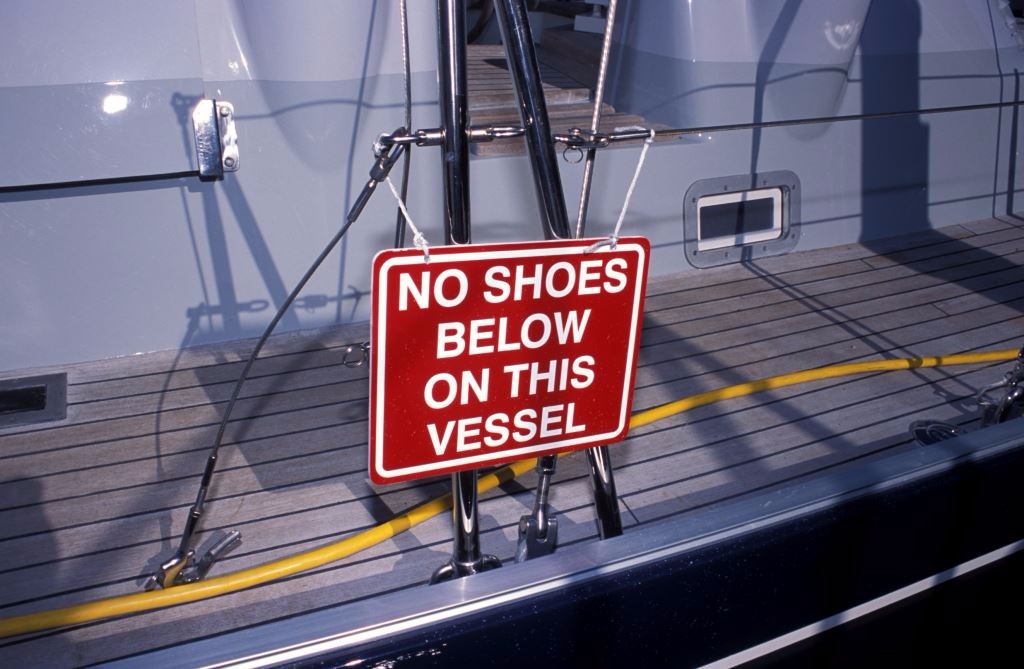Text and photos by Steve D’Antonio
Copyright © 2016
From the Masthead
“This is a bulls#*t industry”. Those words were recently spoken in frustration, by a reader in the midst of struggling with a dealer over an engine problem. Another reader recently shared the following tale of woe, the names have been changed, “Jane and I have had a very difficult time since purchasing the boat. We have spent the last 2 months trying to correct poor/incomplete work that was done after purchase. We are so discouraged, we think we are going to put boat up for sale after the electrician you recommended fixes things. John.”
I do not exaggerate when I say I receive similar notes on a weekly basis, and it pains me to read each one of them, particularly in the case of folks who are leaving boating because of deep frustration and unnecessary financial stress that’s been placed on them by the marine trades. In nearly every case these episodes are entirely avoidable. It’s notes like these that inspired me to start the consulting firm, and act as an advocate for boat owners, as well as writing weekly and monthly columns on this website and the SDMC Facebook page. Apropos of that mission, this month’s feature, “Cracking the Code”, part two of a two part series, covers the subject of selecting and working with boatyards. I hope you find it both useful and interesting.
Cracking the Code: Working with Boat Yards and the Marine Industry Part II
In last month’s opening segment of this two part series, I covered the initial evaluation of a yard or contractor and their staff, as well as determining technical proficiency and the value of certifications. In this second and final installment I’ll review cost control, time and material vs. quoted work, timetables, maintaining a good working relationship with those carrying out work, and the all-important subject of avoiding conflicts of interest.
Cost Control
When I converse with boat owners on the subject of their interaction with boat yards the discussion invariably turns to cost, or more precisely, the unpredictability of the cost of maintenance or repairs. I’ve heard, on many occasions, boat owners say “I take whatever the yard tells me [about the cost] and I triple it, then I know what the job will really cost” or words to this effect. Having said that, I’m convinced that most boat yards aim to please and they want their customers to return. While there are a variety of reasons why they may not actually succeed cost, and its aforementioned unpredictability, is one of the most common causes of customer disaffection.
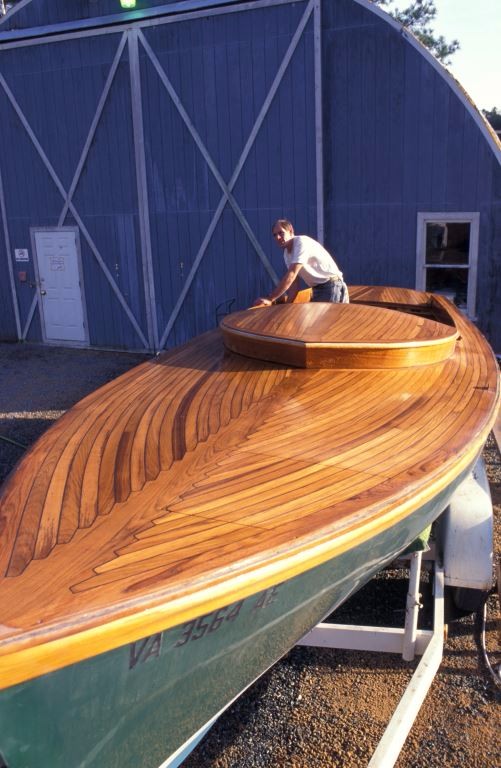
It looks great, but what will it cost? In most cases a yard should be able to tell you in advance. For common, routine work like this deck replacement, determining the cost for folks who have done it before should not be difficult.
It’s clear to me that the solution to this problem is to emulate other industries in providing boat owners with fixed price quotes, or at the very least meaningful estimates with clearly defined margins of error. I’ve written several editorials for a marine industry trade publications on this very subject, imploring marine professionals to get savvy on the subject of quoting, as it’s likely more and more owners will, or should in my opinion shun yards that can’t offer this level of cost predictability. I strongly believe that this process, when adopted, will provide a sea change in the way the industry is perceived by consumers. Admittedly, it’s not an easy leap to make; however, the rewards are, in my experience, undeniable.
T&M and Quote Defined
I routinely hear these terms used within the industry, and when I do I often suggest to my clients that they request from those who may carry out work, clear definitions from that specific contractor. My definitions, while typical, are by no means codified within the industry, which is why you must ask for clarification, in writing, before committing to any work.
In most cases, when you cruise into a boat yard or work with a marine contractor (this, once again, may be anything from engine mechanics and electronics tech’s to electricians, canvas-makers and varnishers/painters) you may have a choice as to how the work will be invoiced. A common approach involves charging for the time the project takes as well as for the cost of the material, plus a reasonable markup for every pump, foot of wire, screw, pair of disposable gloves, quart of primer, sheet of sand paper etc.
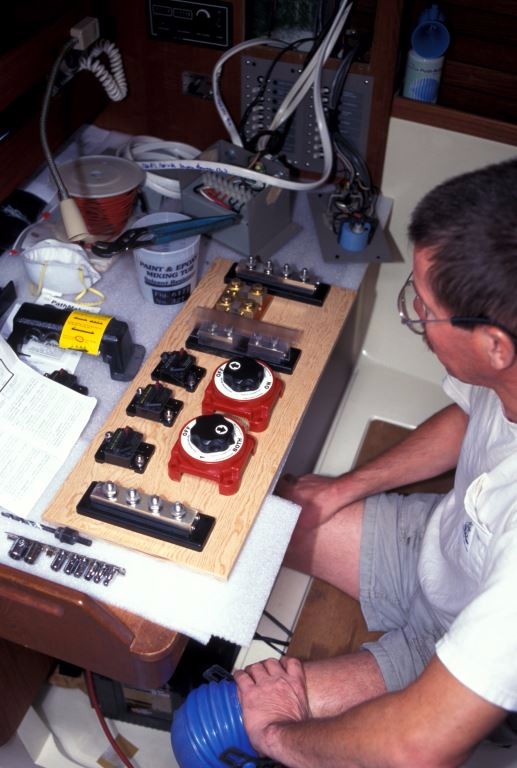
Some projects lend themselves to a quoted approach, especially refits, upgrades and new installations. Troubleshooting and analysis of problems, on the other hand, are difficult if not impossible to quote.
When the T&M approach is taken, and that by no means is it de rigueur, I would argue strenuously that the material mark up should be based on the yard’s cost plus a percentage rather than an arbitrary list price for the product, which can often be based on a (highly unrealistic) manufacturer’s suggested retail price, one that no one is actually expected to pay. Let’s be honest, in many cases those “list” prices are there to make “your price” look more desirable. Using the former approach, if the yard gets a discount on materials because they bought in bulk , got a deal or have a savvy parts manager, or the price of a product went down (it does happen), the savings is passed on to you, yet the yard still makes its percentage. That’s fair for all parties involved.
When I managed boat yards customers would occasionally ask what I paid for materials or what my “markup” was. While some managers are reticent about sharing this information I was unabashed in my explanation, the mark up on materials is part of the yard’s overall profit plan, along with the mark up on labor. Remember, the yard’s goal is, understandably, to make a profit and that’s their incentive to come to keep the doors open. Expect to pay the mark up provided it’s not exorbitant, it typically ranges from 10% to 40% depending upon the product or part, paint, wire, timber and engine parts are generally closer to 40%, while electronics and engine markups are typically at the lower end of the scale.
This concept, carrying out work and being paid for how long it takes, however long that may be, often referred to simply as T&M, is well entrenched in the marine industry. Many boat yards prefer to work using this approach. When I discuss this concept with managers and yard owners the refrains are familiar, “T&M is safe”, “We can’t get burned because you really can never tell how long a repair or project is going to take”, “Every boat is different so you really have no idea how long it’s going to take” and so on, the notion being that most undertakings of the marine service and repair variety are such an incredible shot in the dark that no boat yard would dream of any billing approach other than T&M. With this approach risk is minimized, to the boat yard. The boat owner really has no idea how much the project is going to cost and in many cases the boat yard doesn’t either, or at least that’s what they believe. Those who have read my columns and have attended my lectures on the subject of what’s expected of marine industry professionals know my thoughts, it’s balderdash. Thankfully, there is an alternative; fixed price quotes or fixed margin estimates.
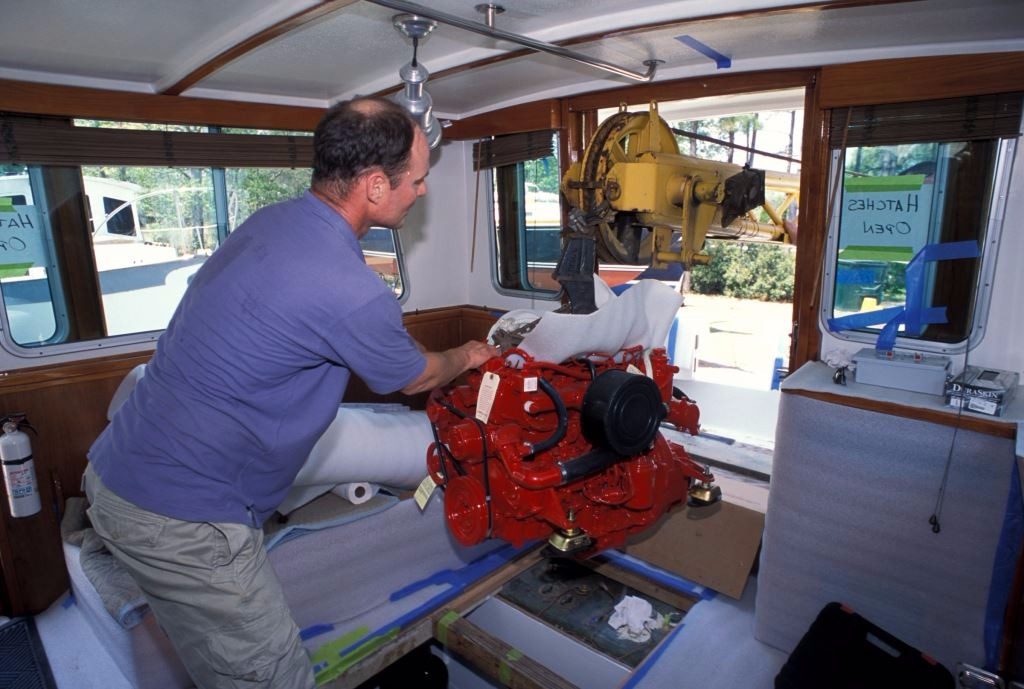
Engine and generator replacement is generally straightforward for seasoned professionals. While surprises can rear their ugly heads, for those who have done it many times unknowns are often minimized. If a yard says they can’t quote a project like this, keep looking until you find someone who can.
Quoting is just that, a quotation for a specific project, repair, refit or upgrade and it’s a game changer to be sure, as it offers clear advantages to both you and the boat yard. For you, the consumer, it affords you the opportunity to consider the proposal as well as comparing it to those provided by others. You can also plan and budget for the project secure in the knowledge that the price is fixed.
Your “Bridge Card”* for Successfully Working with the Marine Industry
- Do you quote work and if so what are the terms of the quote and what’s the yard’s definition of a quote, is the price fixed or is it an estimate, does it include shipping, taxes, and other fees?
- For T&M and quoted projects, what’s the material markup protocol?
- Is the yard’s workmanship guaranteed and if so what happens if I’m far away from the yard and someone else has to undertake repairs?
- How are third party warranties handled, will the yard act as an intermediary for gear they install that then fails? If, for instance, an inverter the yard installs fails, will they assist you in getting coverage?
- Will the work be carried out to ABYC/NMEA (or another) standard? If so, are the folks doing the work ABYC/NMEA certified in the appropriate discipline or supervised by those who are? Does the yard have a valid membership in this organization?
- Make certain it’s agreed that all work to comply with manufacturer’s installation instructions.
- If the work is quoted, is it billed in segments as the work is carried out?
- In cases where you are going to a yard for a specific project or refit, is storage/dockage or electricity charged while work is being carried out (ideally it should not be)? Will the yard consider waiving or discounting off season storage fees for large projects and refits?
- Do you need to provide a deposit for work before it begins and if so what’s the typical percentage or amount?
- Timely invoicing is important, particularly for T&M work. Being slammed with a huge invoice after the work is completed or nearly completed should be avoided. Toward that end, ask, how often are invoices sent out and if you call or e mail can you get an up to the minute (or at least through the previous work day) progress report on the amount of work that’s been completed or invoiced?
- Establish a time table for the work’s completion.
- Ask to see a sample invoice. Having wrestled with the equation of providing enough information, but not too much, I’m sensitive to how detailed invoices are, or are not. I once had a client describe the invoicing from a yard, in which he had nearly $100,000 worth of work completed, as “less than useless” because it was so confusing and riddled with errors. Ideally, it would be beneficial to see an example of what you can expect to receive before committing to any project, especially a costly and/or lengthy one.
* A bridge card is a condensed set of instructions for the use of a piece of electronic gear, it’s usually laminated and designed to be used as a quick reference tool in the cockpit or on the bridge. This might also be referred to as a crib or cheat sheet.
Those who work in boat yards that do not offer quotes are, no doubt thinking at this point, what’s in it for me, sounds like a lot of risk and no benefit? Rest assured there are a number of strong incentives for a boat yard to adopt the quoting process; I’ll detail just a few here. First and foremost, when a boat yard provides you with a quote they virtually eliminate the possibility of incurring a billing dispute, which nearly always improves customer relations and thus loyalty, volume and the bottom line. There’s nothing less pleasant for both boat owners and boat yards alike than dealing with a dispute over how much a project has cost or should have cost after it’s complete. With a quote you know the price before you agree to proceed, so there’s little to argue about. Second, when a boat yard takes the time to quote a project for you, they are forced to think through every foreseeable, and perhaps some unforeseeable steps in advance. This equates to better planning, better efficiency and by default it establishes a timetable, which in turn improves the yard’s scheduling and allows you to make plans based on a completion date. This planning nearly always benefits the yard as it enables more effective scheduling, which translates to satisfied customers, which in turn translates to more customers.
Finally, because it’s a quote rather than T&M or a not-to-exceed protocol, the primary benefit to the boat yard is, provided they’ve been careful in their calculations, the profit margin is not only fixed, there’s an incentive to work more efficiently (without compromising quality of course) and more intelligently, the yard is rewarded for its experience, homework, risk and good management of the project. If the project is completed more quickly than anticipated the yard is, once again, rewarded with higher profit margin. If, on the other hand, the project takes longer than anticipated, the yard absorbs the loss, so there is risk, but so too is there reward. Having to “eat” a project that goes over the quote also incentivizes a yard to work smarter the next time; hard-won experience is often the most valuable. This is in stark contrast to T&M work, wherein the longer the job takes, irrespective of efficiency, the higher the bill. I eschew this approach in that it is inherently flawed, the longer the job takes the more money the yard makes (albeit at a fixed margin and while taking up space and resources that could be dedicated to more profitable work), thereby rewarding inefficiency.
When I hear that a boat yard won’t quote a clearly quotable job I have two thoughts; the first is, there’s always a fear of the unknown and most boat yards, when they do undertake quoting, are much better at it than they believed they would be. It takes some practice, implementation of a quoting program and employee education (the breadth and cost of these should not be underestimated) ; however, it’s clearly doable. As mentioned earlier, other industries use this format with great success; the marine industry should be no exception. The second is, these folks do this work every day, day in and day out, for years, the collective wisdom of some yards is often vast and spans many decades; if they can’t tell you how long it will take and how much it will cost to carry out routine projects, it’s not unreasonable to question their ability to undertake the work all together. Finally, based on my experience, when the folks carrying out the project know it’s quoted, they tend to work with a greater sense of urgency, particularly if the management invests them in the quoting process, as they should. If you know what to look for, you can often spot yards and individuals who rely on the quoted project approach, there’s significantly less idle chatter, less standing around, less evidence of over-staffing, i.e. two or more people doing a one-person job, and my personal pet peeve, no waiting by the time clock to punch out. Finally, in order for a yard to be able to quote successfully they must be prepared to invest in the necessary infrastructure, training and software, which, as mentioned previously, can be significant. That, however, is an article for the marine industry, and not the boat owner’s problem.
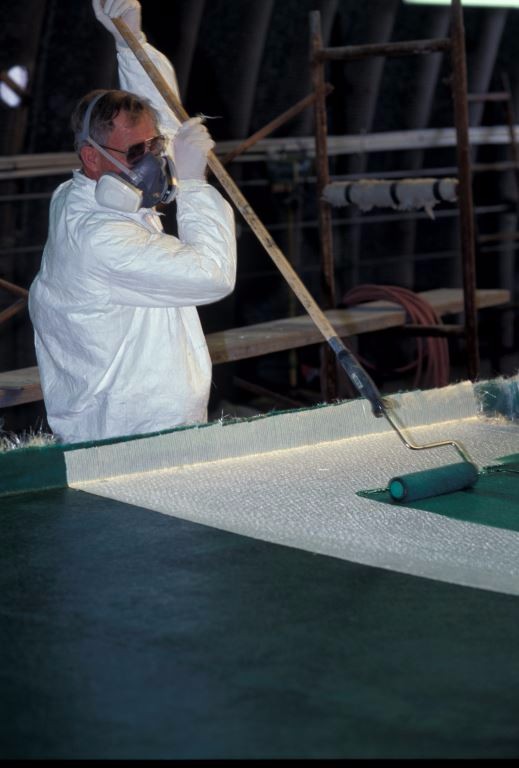
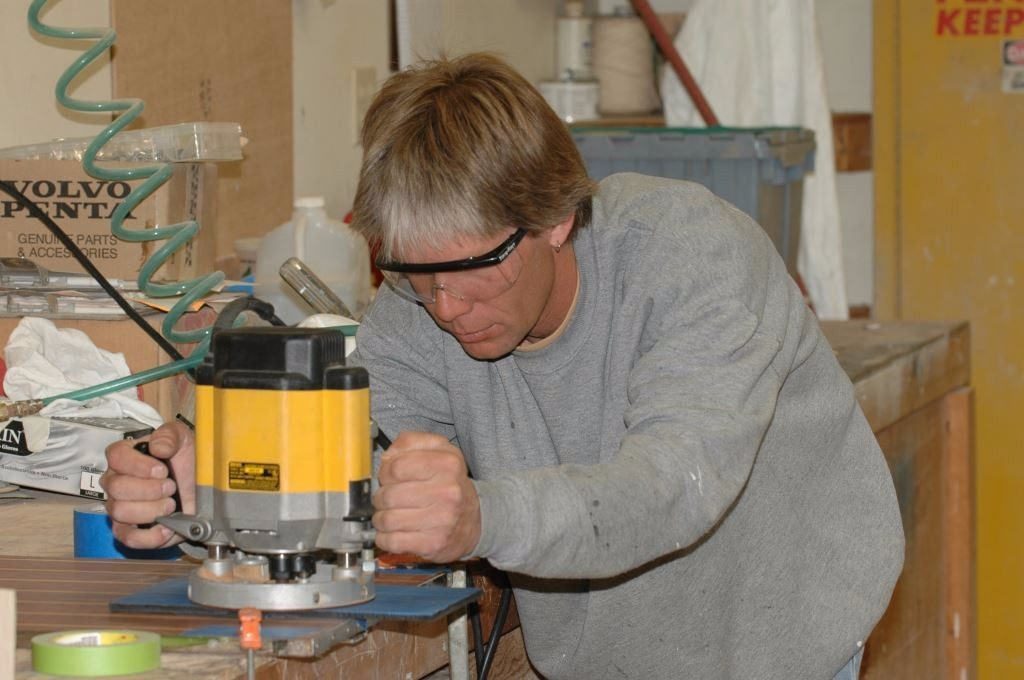
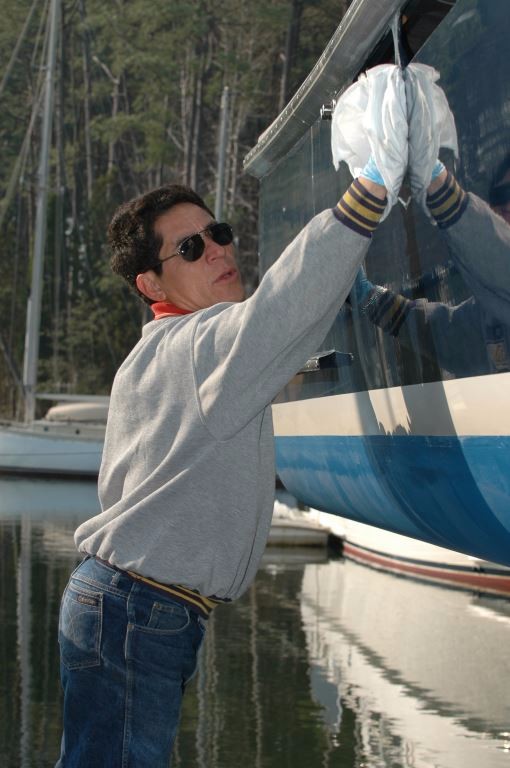
The sets of skills required to effectively operate a boat yard are vast, attracting and keeping this talent is no easy task, and it’s not inexpensive. Employers must offer incentives such as health insurance, retirement plans and competitive salaries, all of which are passed on to the customer. Provided the result is high quality work whose value is clear, the arrangement is fair and offers good value for the money.
Having made the case for quoted rather than T&M projects, it should be made clear that not every job can or should be quoted. Mechanical and electrical troubleshooting, for instance, is not the type of task that any experienced professional would or should quote, however, it does pay dividends, for you, to ensure that the folks carrying out the troubleshooting are experienced, well trained and ABYC, NMEA or factory certified where applicable. In this case, efficiency rather than a fixed price is the goal. Small projects are also typically not quote-worthy. Remember, the yard has to spend the time researching and preparing a quote and as such it makes little sense for this to be done on a job that’s anticipated to take just a few hours.
Projects that do lend themselves to quoting are, among others, hull and deck painting, varnish, electrical upgrades, hardware and equipment installations such as windlasses, generators and engines as well as, or particularly, complete vessel refits. Expect a reasonable amount of caveats with any quote (when I wrote quotes as a boat yard manager I was careful not to include too many exclusions, doing so negates the value of a quote), if a boat yard drills into your deck to install a radar mast or winch and the bit pulls up sodden, rotten balsa core; expect the quote to be amended. Every eventuality can’t be anticipated. In my experience, however, those that can be anticipated are far greater than those that can’t be.
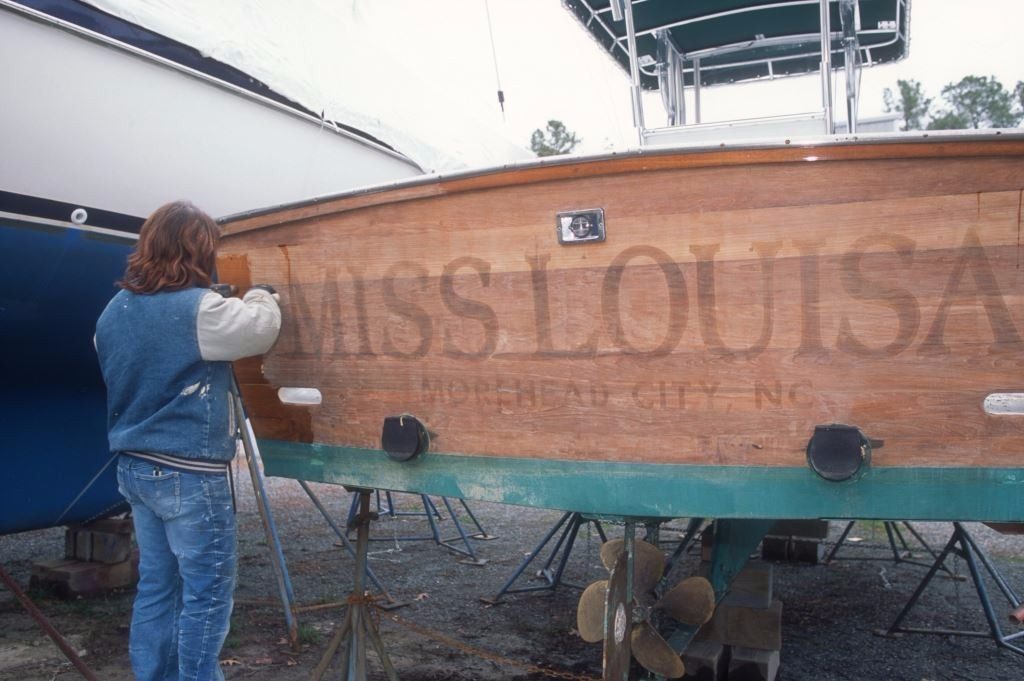

The task that generates the greatest shock and awe when the bill arrives often involves varnish. Folks are consistently surprised by how much this task costs, and as such it’s an ideal candidate for a fixed price quote, as are most painting tasks.
Timetables and Schedules
After unknown cost, scheduling, or the lack thereof, is the area that generates the greatest sense of frustration and disappointment in boat owners. The yard you choose should be able to give you a reasonable expectation of when a project will be complete. If they have a quoting program in place, then this becomes easier for them as they are already calculating the time required for a project.
When I managed boat yards customers would occasionally say, “I’m in no rush, work on it when you have time” thinking they were making life easier for those scheduling and carrying out the work. In fact, unless you want your vessel to languish, untouched for weeks or months at a time, this represents one of the most egregious sins you can commit as a boat yard customer. What you are really saying to the manager is, “Everything is more important than my project”, a message you should never convey. During my tenure as a yard manager, I learned that this good-intentioned approach on the part of the boat owner was a veritable sure fire way of generating a dispute. When these occasions arose, I would attach my own timetable and completion date to the vessel and its projects, signaling to the yard’s staff, and the scheduler, an all too necessary sense of urgency.
Avoiding Conflicts of Interest
“A Conflict of Interest is a set of circumstances that creates a risk that professional judgement or actions regarding a primary interest will be unduly influenced by a secondary interest” That definition lays bare the challenge faced by both boat yards and boat owners alike. Compounding matters is the fact that conflicts of interest in boat yard and marine contractor settings are typically insidious rather than overt. This is a leisure industry and thus the tendency is for boat owners to let down their guard where questionable business practices are concerned.
In my experience there are two primary potential conflicts of interest, of which boat owners should be aware when selecting and working with boat yards and marine contractors. The first involves dealerships; if a yard or contractor is a dealer for a particular piece of gear, an engine, generator, refrigeration system, radar etc, their tendency will be to recommend that gear above all others. The hope is it’s the best gear, and the right gear for your application, however, the risk is it’s being recommended primarily because it’s stocked and/or the margin is more significant. The onus is on the boat owner to do his or her homework regarding equipment options, warranty, reputation, application etc. Enter into the process with a make and model in mind, rather than simply leaving the decision entirely up to those acquiring and installing the equipment.
The second involves yards that include new and used boat brokerages. I once worked for a yard that was attached to a boat dealership and can attest to the pressure placed on the yard by the sales department. Here the waters can be muddy indeed, as priority is often given to brokerage customers. If a vessel has sat on the lot for a year and a potential dealer expresses interest in closing a deal, “if I can have it by the end of the month”, other customer’s schedules are often affected as resources are brought to bear in order to complete this sale.
To the extent possible, where a yard operates a brokerage, sales and service should remain separate, and the former’s needs should never impact resource availability or scheduling for retail service work. It’s a question worth asking when carrying out your evaluation, “Do brokerage customers’ and sales department needs take precedence over mine?”
Maintain a Healthy Relationship with your Boat Yard
There’s an easy way to avoid misunderstandings and disputes and it involves the simple act of placing all of your thoughts and communication with a yard in writing. Avoid stopping yard employees (you should only be making these requests to those that are authorized to take them, managers and service writers for instance rather than the folks carrying out the work, they’ll simply have to relay your request, maybe, to a manger, where it may get lost in translation) midstride and dictating work requests or modifications to current projects verbally. If you do so, be sure to follow it up with an e mail or written document reiterating your thoughts.
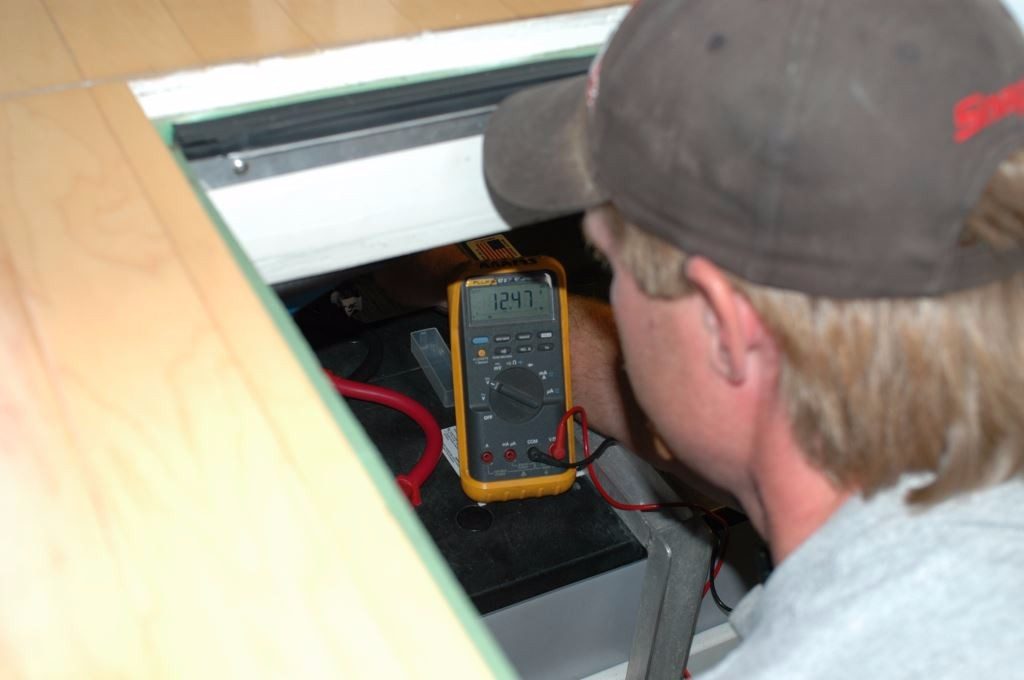
When it comes to troubleshooting you want the very best, and this is especially true where electrical issues are concerned. Sharp troubleshooting folks cost more to employ and keep; however, this is nearly always offset by their enhanced efficiency.
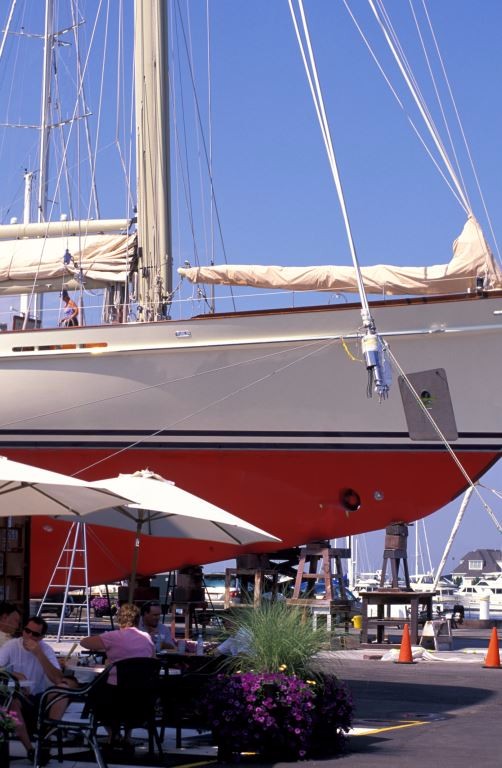
Some boat yards offer other amenities, pools, restaurants and a club atmosphere. It’s challenging, however, to serve two masters well and few facilities have mastered this approach.
If your vessel is in the midst of a refit or major undertaking, engine replacement, re-wiring, paint job etc, it’s reasonable to expect weekly updates. Smaller projects may require you to request an update. All reports and updates should be received in writing. You should also be made to feel welcomed to visit the yard during any repair, refit or service work (and you should do so often, if not aboard full time), however, remember, whether the project is quoted or T&M, time is money and if you stop in and chat with the folks doing the work you are costing either them or yourself money. Thus, it’s best to keep your time speaking with hourly folks to a minimum. Managers, on the other hand, should give you as much time as you need without incurring charges.
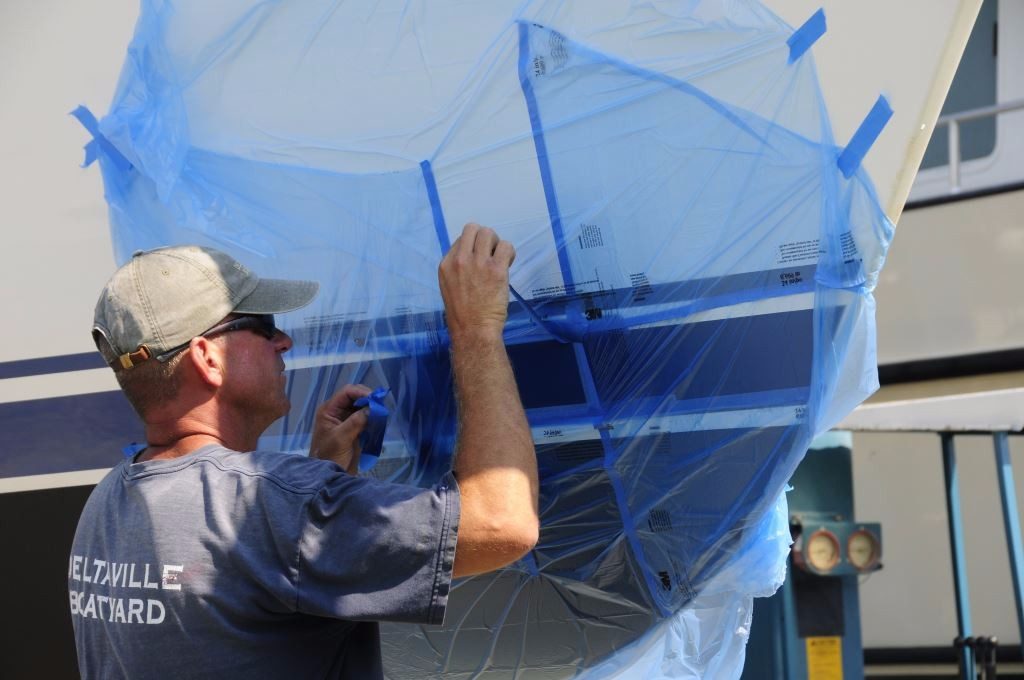
‘There’s no rush, work on it when you can’. Folks often use this phrase believing that they will either save money or they are doing the yard a favor. In fact, neither is true. Schedules and deadlines are beneficial as they maintain a sense of urgency. Projects without deadlines nearly always languish.
If scheduling is important to you, and it should be because projects without schedules often languish, then you should have this discussion with a manager before making a commitment to proceed. Part of that discussion should include the yard’s protocol for dealing with projects that fall behind schedule. There are few things worse, when dealing with a boat yard, and then finding out your boat won’t be launched and commissioned the day before the scheduled departure date. Depending upon the size of the project, the yard should be able to give you ample warning should it appear that work will not be completed on time, the larger the project the more notice you should be given. Make this expectation clear, that bad news about a blown completion date will, while never good, be much more readily accepted if it’s provided well in advance. In my opinion, most projects should operate on a schedule and every project should have a clearly defined anticipated completion date. Again, I routinely implore my clients to avoid ever using the words “there’s no rush”. Simply put, projects without schedules all too frequently fall by the wayside.

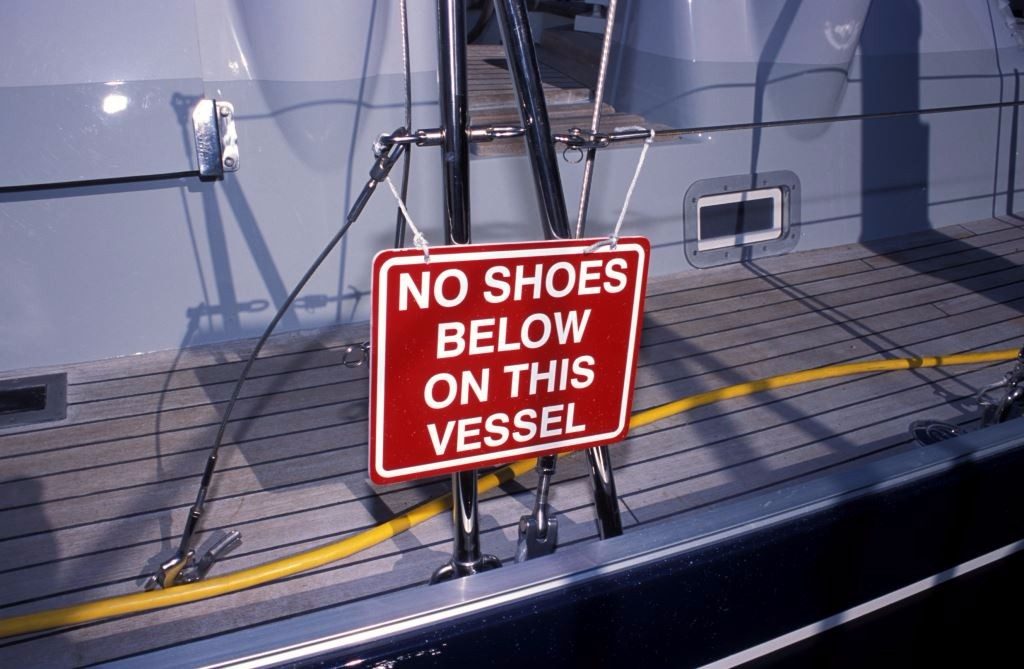
Attention to detail is a valuable yardstick by which to measure a yard’s “attitude”. Do they care about your boat and the quality of their product?
Finally, for especially complex or large projects, you may wish to call on the consulting services of an outside, independent expert who has no affiliation with the yard, a surveyor, naval architect, equipment vendor or manufacturer etc. Squared away yards that are confident in their work should have no problem discussing a proposed project, or having another professional inspect their work. Again, if you have any intention of doing this it’s worthy of discussion before the project or repairs begin.
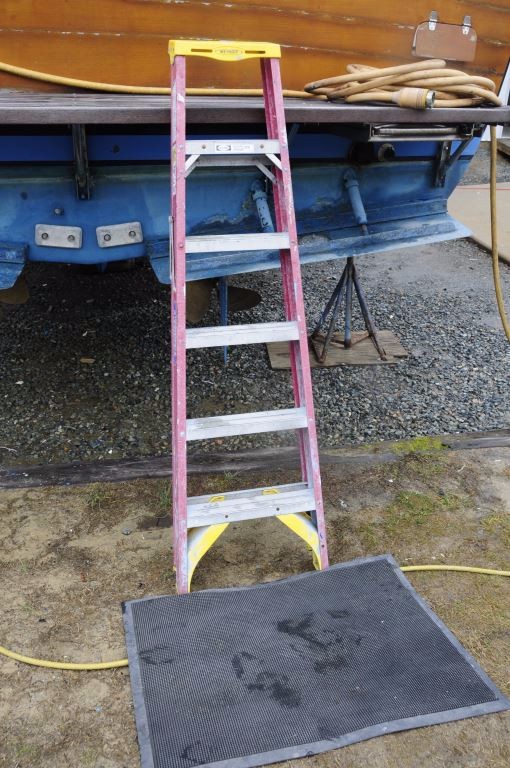
A door mat at the base of every ladder; it’s a small thing, however, it’s an important measure of the respect staff have for you and your boat.
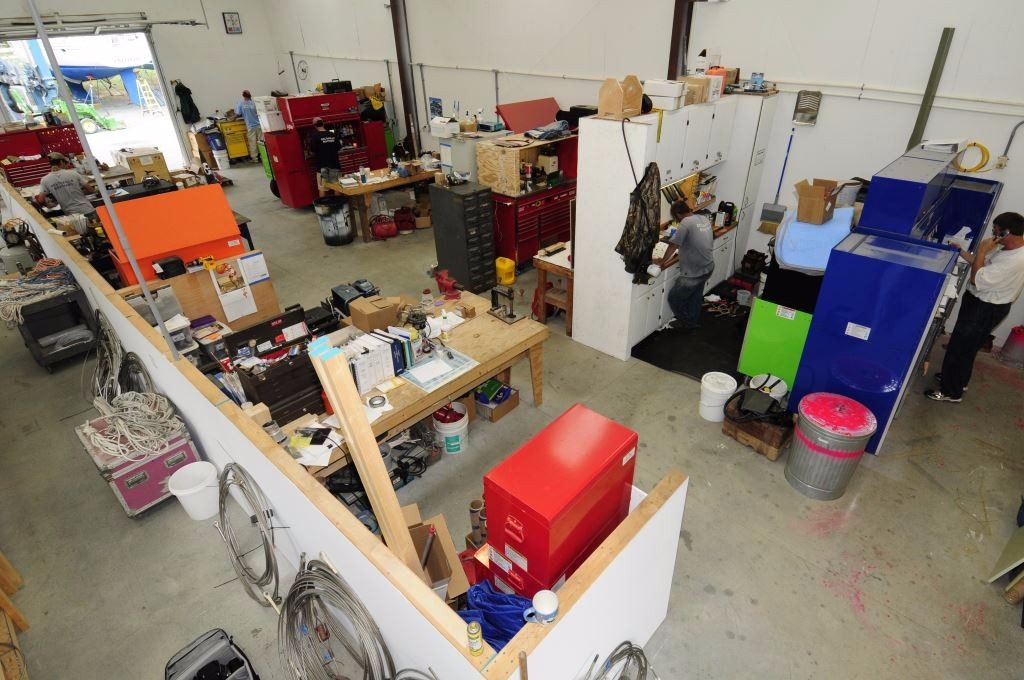
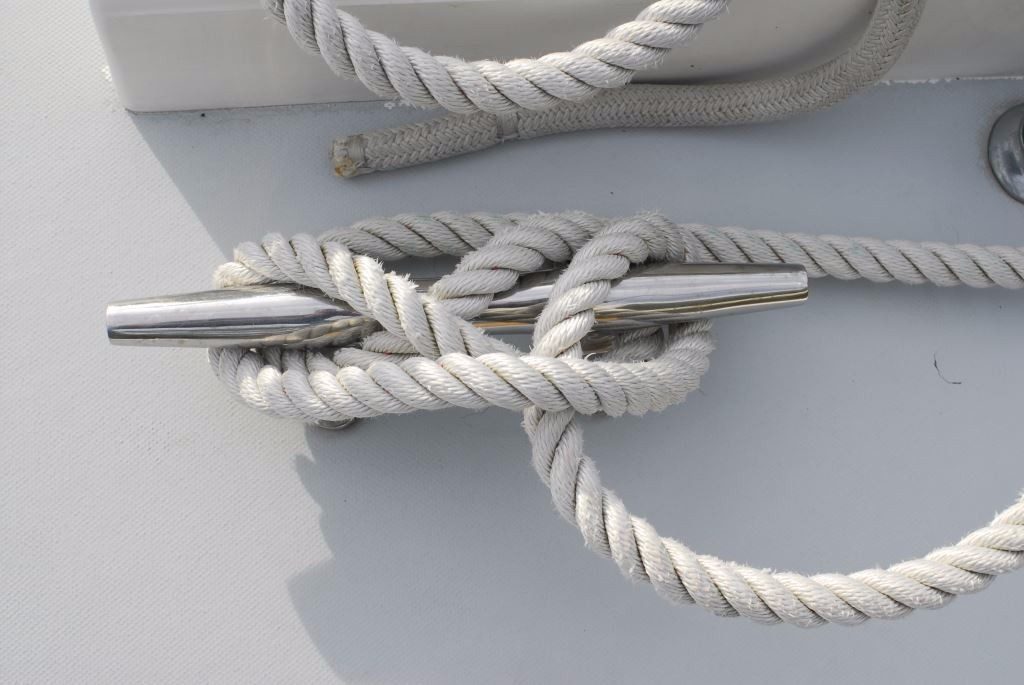
Small things do make a difference, are shop spaces neat, clean and well stocked with tools owned by staff? Do dock hands know the proper way to cleat a line?
Remember, you are the customer; you have the power to either get what you want, or go elsewhere. The questions you ask may catch them off guard, however, those that are savvy and willing to work to earn your business will take them to heart and respond positively. Those that fail to do so don’t deserve your business. On more than one occasion I’ve advised my clients to halt a large project in the early stages and move the vessel to another yard. The signs were clear, poor communication, incorrect invoices, and unwillingness to quote quotable projects and an unwillingness or inability to carry out work in a professional manner to accepted standards and/or in accordance with equipment manufacturer’s instructions. In my experience, such scenarios rarely progress from bad to good, so don’t ignore the early warning signs. Ideally, while it’s an important arrow to keep in your quiver, by asking the right questions up front, you’ll avoid ever having to move to another yard mid-project.

